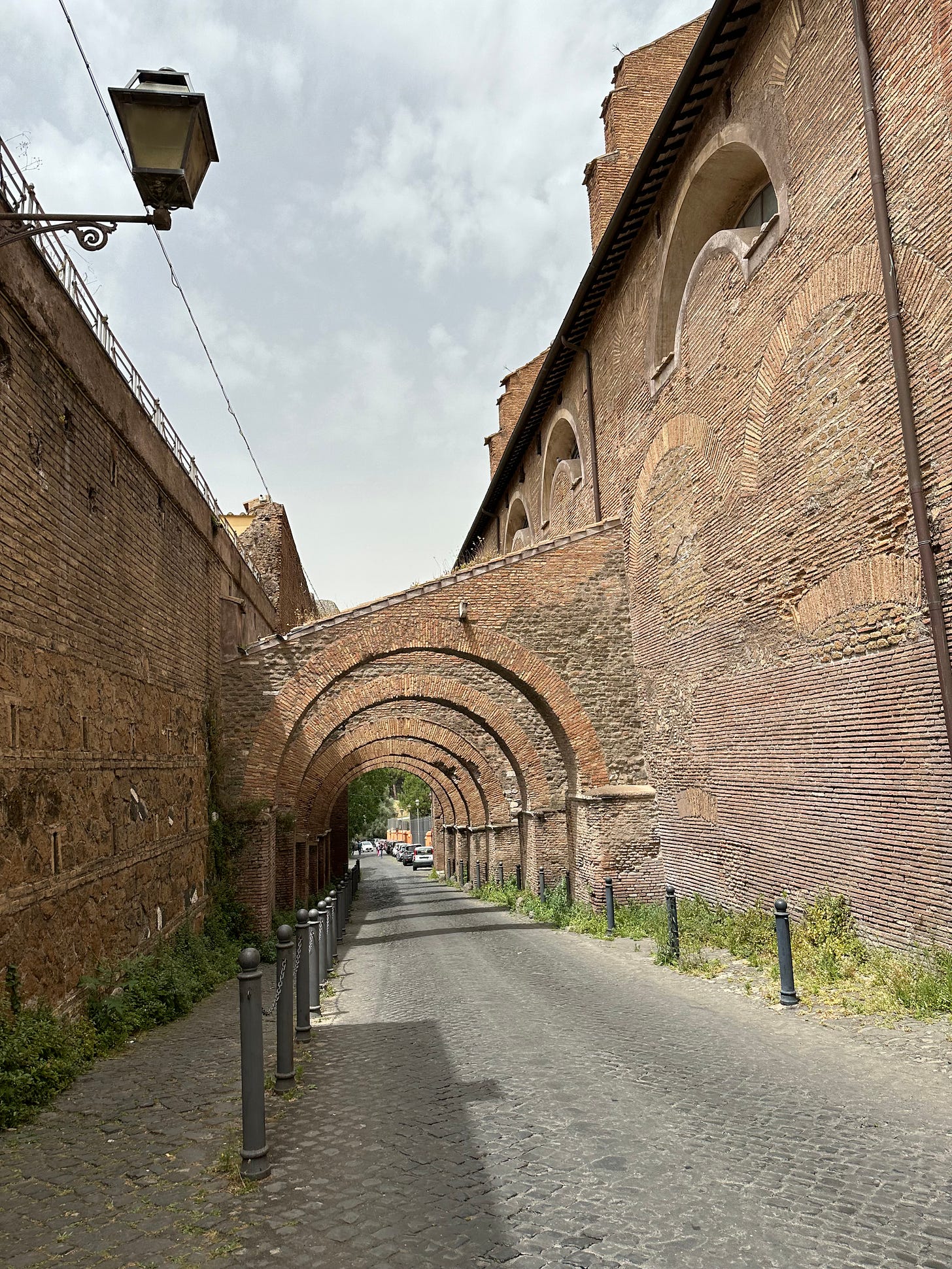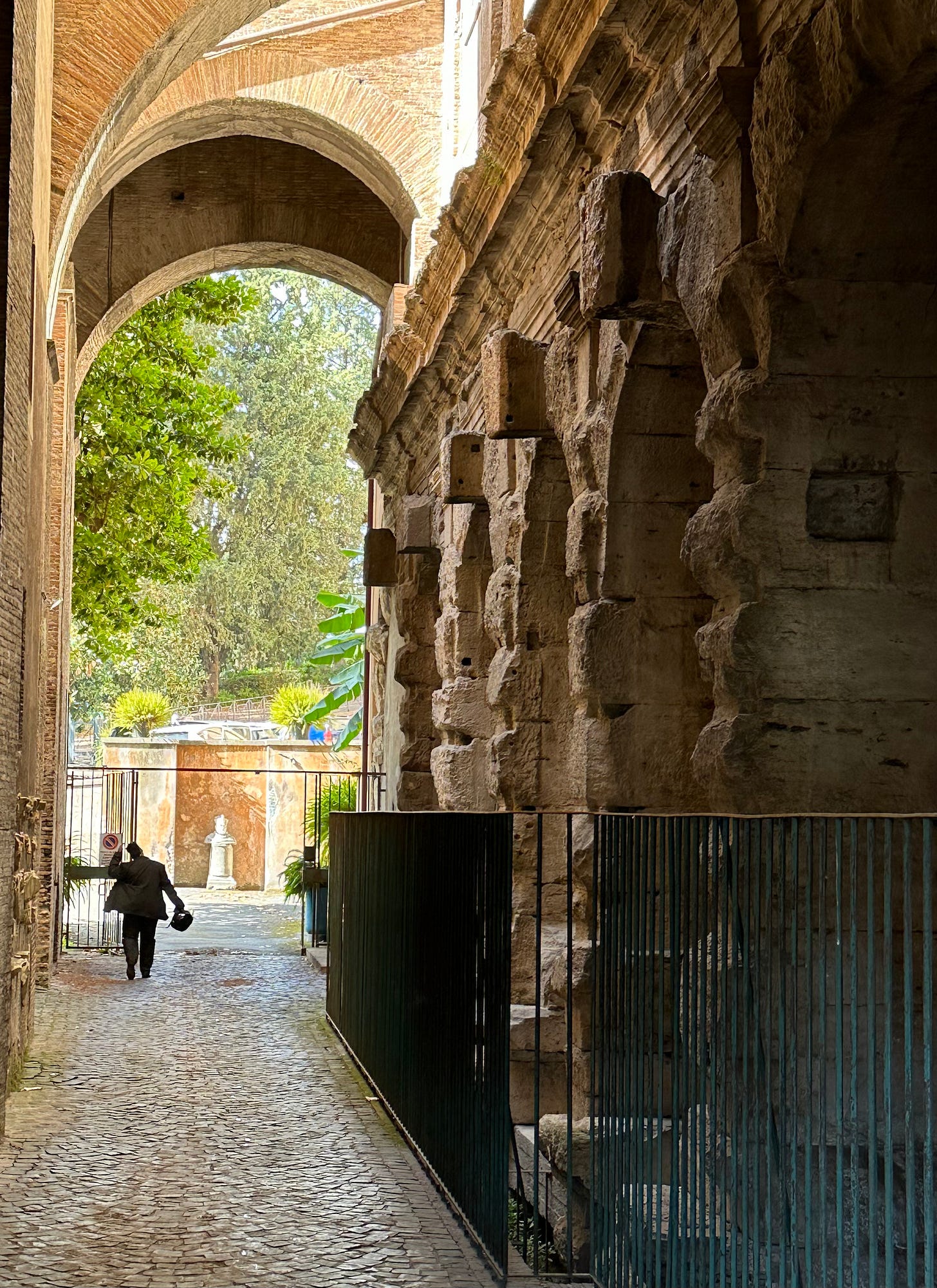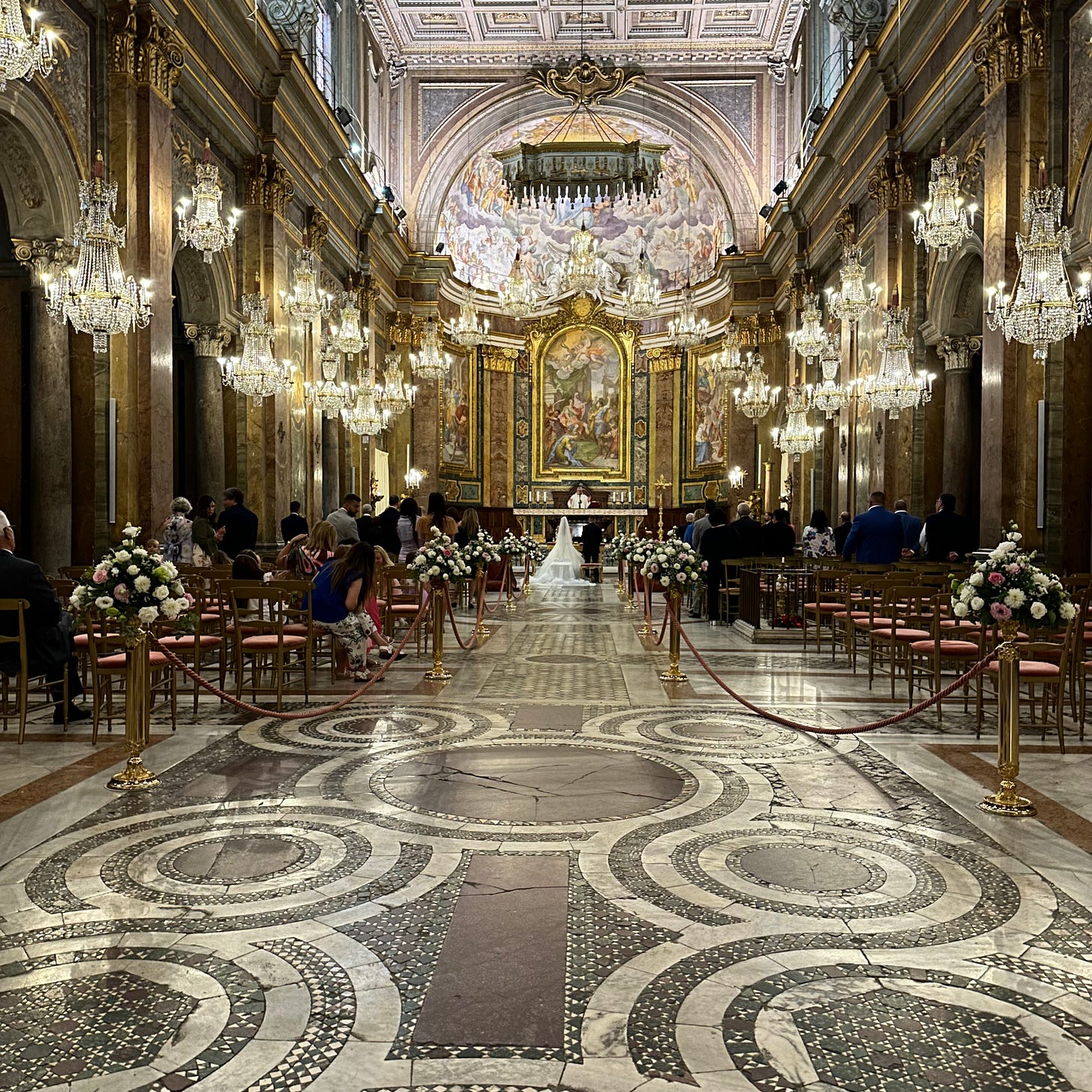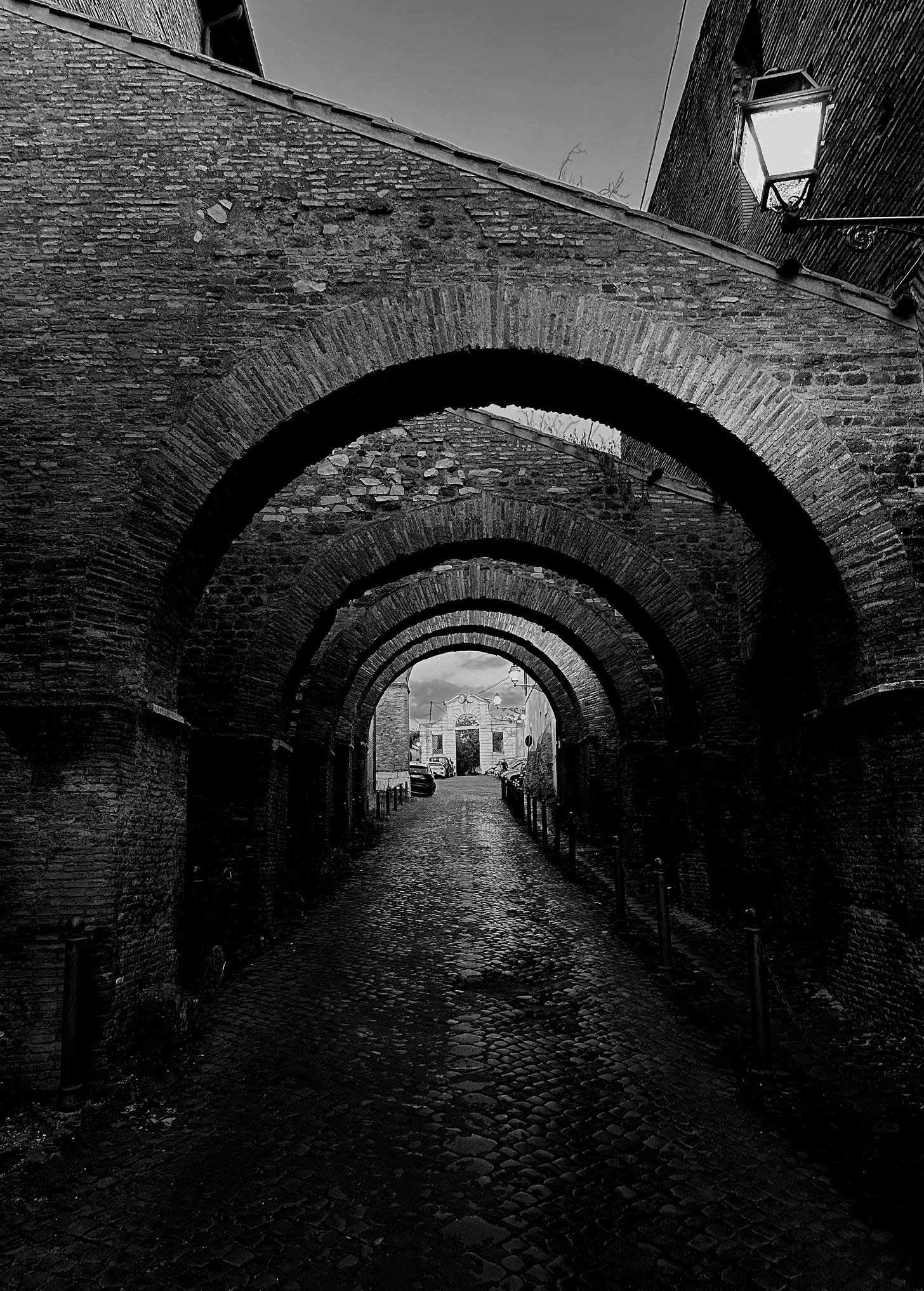Some of my favourite views of Rome
4: Clivo di Scauro
A languid stone’s throw from the hubbub at the Colosseum is a street quite out of time. The Clivo di Scauro (in Latin the clivus scaurus; “clivus” means slope and incidentally gives its name to a sloping piece bone at the base of the skull which, though interesting, shan’t concern us here).
The name of steep road is taken from a (possibly pertinent) ancient inscription and medieval sources. These suggest it was first laid out by a member of the gens Aemilia Scauri, a branch of the ancient and patrician Aemilia family, quite possibly Marcus Aemilius Scaurus who was consul in 115 BCE.

The road leads up the Caelian Hill which, by the late Republic and Scaurus’ consulship, was the least built up of the seven hills on which archaic Rome had been founded. In the mid first century CE, when the nearby Subura was so densely built up that it had restrictions on the height of apartment buildings, the Caelian was free enough of dense construction that it was chosen as the site of the vast temple of the Divine Emperor Claudius. By the early second century and the reigns of Trajan and Hadrian which—with hindsight—we can see as marking the apogee of Imperial Rome there were insulae on the Clivus Scaurus.
The street serves as a synecdoche for the rise and fall of Rome’s wider population: from densely built apartment buildings in the second century—though considerably more desirable than those in the miasma of the low-lying Subura—to conversion to a single and very grand late Imperial house replete with frescoes, (lost) marble cladding, and an internal courtyard in the third. In the very last gasp of the fourth century, by which point Rome was a Christian city, a vast church was built incorporating the facades of the clivus scaurus and in part burying the domus to level the steep hillside. Arches across the road act as buttresses between the church and the section of the Aqua Claudia on the other side of the road.

The Basilica of Sts John and Paul (Santi Giovanni e Paolo al Celio) has undergone umpteen modifications in the sixteen centuries between then and now. There are (exquisite) medieval “Cosmati” floors, a panoply of eighteenth century frills, and—most bizarrely of all—chandeliers which once hung in the ballroom of the Waldorf Astoria in New York City, a gift from the sometime titular cardinal, Francis Spellman.

Back in the distant year two thousand I used often to sit on the planters in front of the church reading novels to kill time while waiting to enter the gates in the aqueduct opposite. Behind the aqueduct in this bucolic corner of Rome, quite surprisingly, are the Mediaset television studios where I then taught English to the amusing producers of a show called Buona Domenica.

The ghosts of ancient apartments and the echoes of early Christianity; atmospheric cobbles, absurdly kitsch chandeliers, and Berlusconi’s trash tv: it is quite simply just one of the most wonderful corners of Rome.



Yes, a lovely post!
And now there's a nice cafe/co-working space - the Casina dei Salvi https://www.wantedinrome.com/news/rome-opens-study-room-archaeological-park-near-colosseum.html - nearby the Museo della Forma Urbis with comfy outdoor space, lots of marble, inscribed bits to invent stories about, and a view of the Colosseum & Palatine. The tram 3 passes right by, providing, by the way, one of the best, low-cost tours of Rome - the cost of an ATAC ticket.